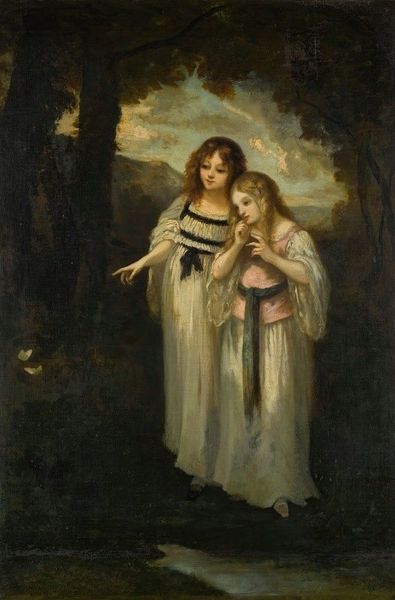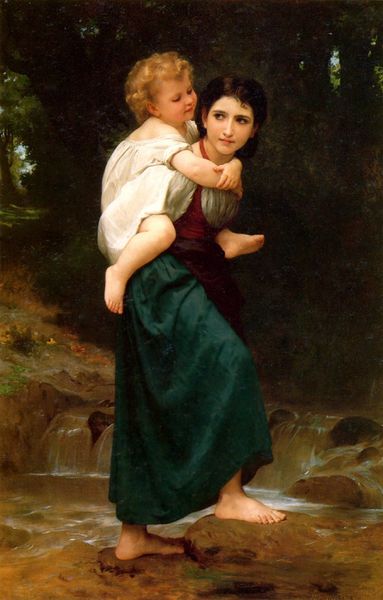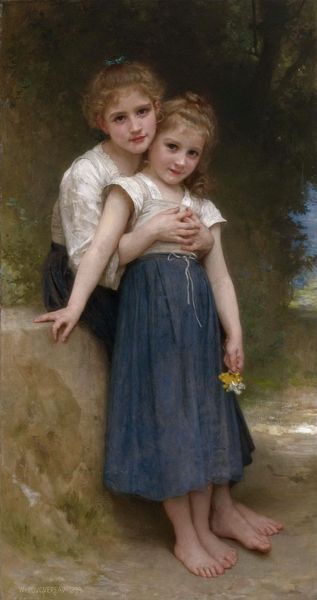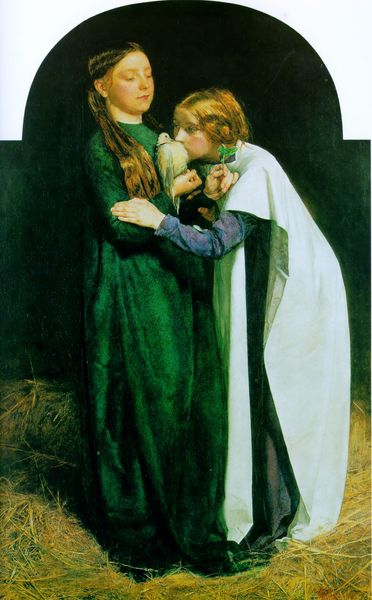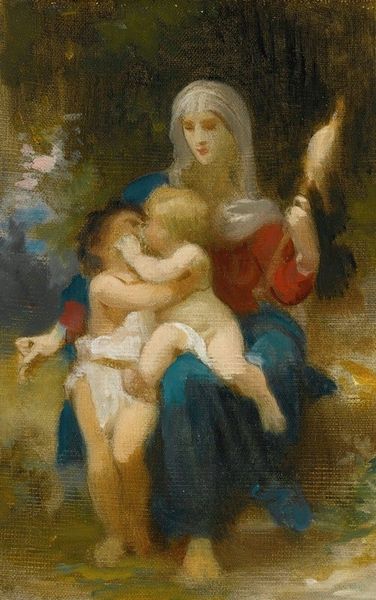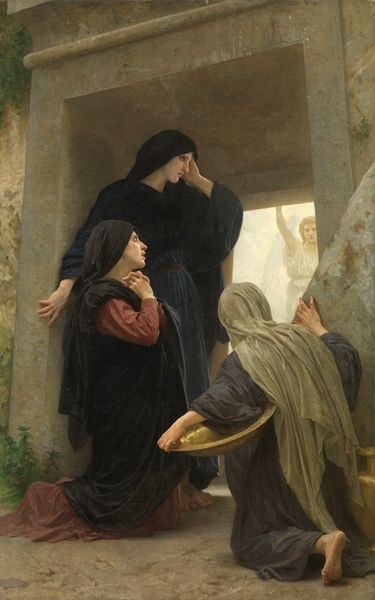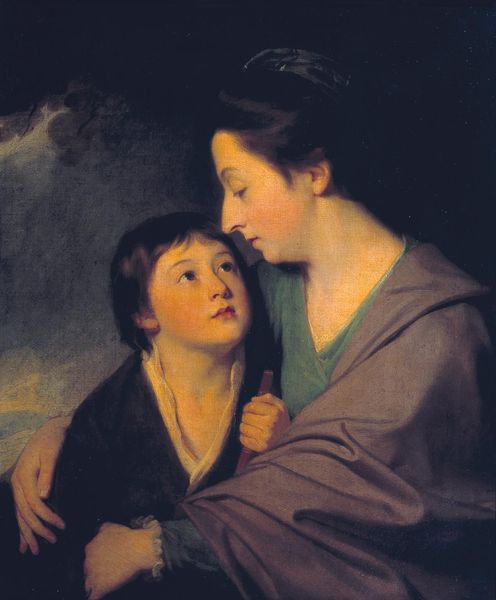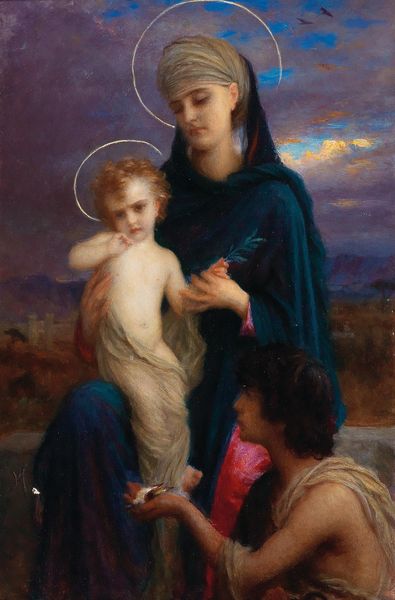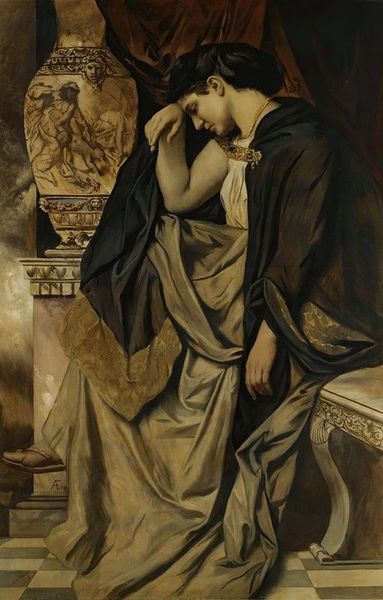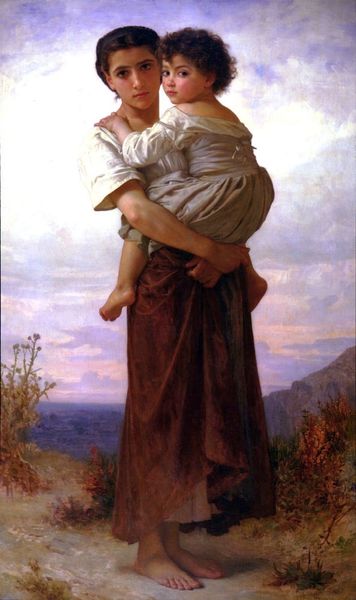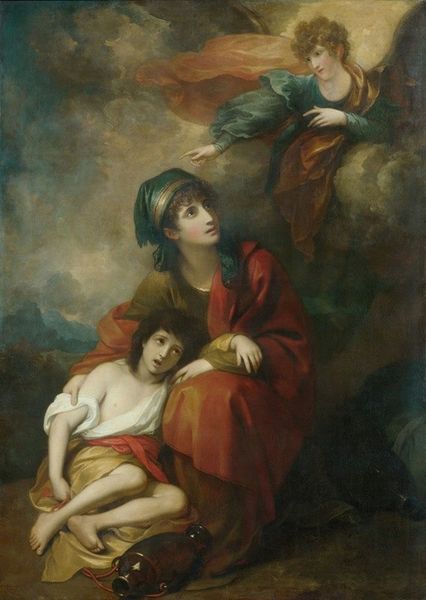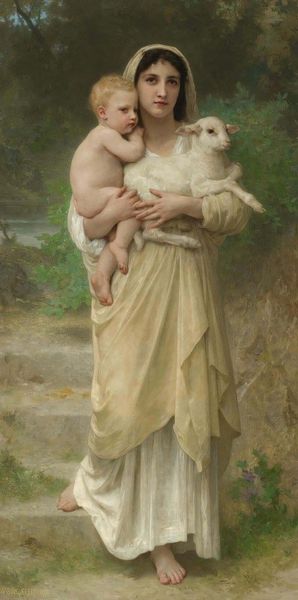
painting, oil-paint
#
portrait
#
figurative
#
narrative-art
#
painting
#
oil-paint
#
figuration
#
romanticism
#
academic-art
#
realism
Copyright: Public Domain: Artvee
Curator: What an evocative piece! My first impression is of intense fragility and imminent danger, though handled with remarkable softness in execution. Editor: This is William Bouguereau’s painting, known as "L’orage," a compelling example of late 19th-century Academic art infused with Realist sensibilities. It captures two young women bracing themselves against an approaching storm. What specifically strikes you about its fragility? Curator: It’s in the stark contrast between their delicate bare feet and the tempestuous landscape. The palpable vulnerability in their expressions is echoed by the almost classical draping of their garments; they feel exposed to the raw power of nature, their safety tenuous at best. Structurally, the artist uses a receding diagonal of muted tones in the rocks to create depth while the dynamic brushstrokes create movement in the ocean and impending sky, drawing the viewer's eye to the vulnerable central figures. Editor: Absolutely. Bouguereau was highly skilled in manipulating the market to ensure commissions; the title suggests universality and romantic distress. There is also a narrative here that links female fragility to that of an oncoming natural event: the ocean storm. During the 19th century, it was fairly normal to imbue paintings with moral themes that reinforced traditional concepts of bourgeois and national identity, even through subtle symbolism. Do you see connections here? Curator: The use of subdued earth tones against the vibrant turquoise of the younger girl’s cloak, may not be coincidental. Turquoise can symbolize protection, or even healing which is in direct contrast to the impending doom implied from the storm raging in the background. Also, it should be observed that his mastery of light and shadow not only creates realism but imbues these young women with a sense of timeless grace, softening the dramatic impact. Editor: From my viewpoint, the grace could simply have helped make the painting more consumable for wealthy patrons. We also need to consider the historical perception of women during that era, and how art frequently positioned them either as icons of virtue or victims of circumstance. “L’orage” seemingly encapsulates both roles. The social perception certainly amplified its initial popularity, even though opinions shifted later. Curator: I find it interesting how our viewpoints, through our specialized training, cause us to experience the piece on such diverse terms, to see a broader historical message versus raw feeling. Editor: Perhaps it is a mark of a worthwhile work, that it has withstood different views and is able to spur various insights across time.
Comments
No comments
Be the first to comment and join the conversation on the ultimate creative platform.
